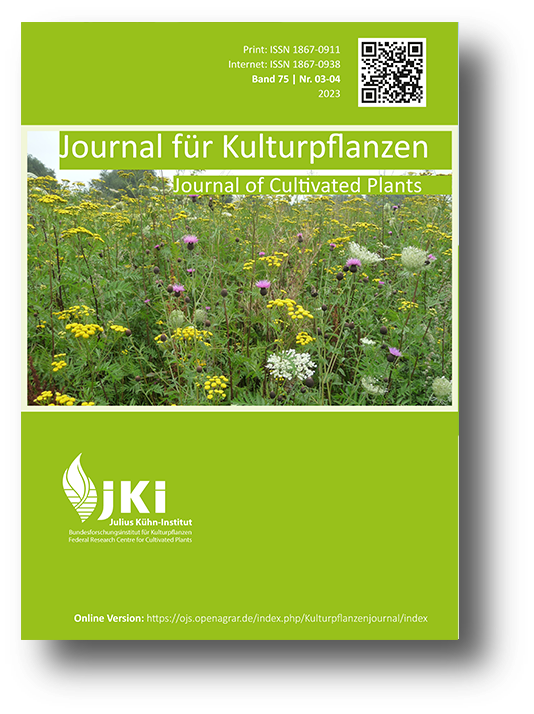Cultivated wilt plant mixtures – Description of their botanical appearance as a basis for the assessment of possible ecological potentials
DOI:
https://doi.org/10.5073/JfK.2023.03.04.01Keywords:
wild plant crop, flower-rich cultures, increasing biodiversity within conventional agriculture, conservation of soil moisture, nitrogen holding capacity of the soilAbstract
Promotional measures of the Renewable Energy Act have led to a strong increase in maize cultivation area, especially in areas with a high density of animal fattening farms. Biomass for fermentation in biogas plants can also be produced with perennially cultivated wild plant mixtures. In this way, energy can be produced in a CO2-neutral way, and at the same time biodiversity can be increased, habitat availability improved and the resilience of the landscape is enhanced. The presented work describes the botanical situation on such a wild plant area during the three stand years mapped. With the help of pointer values according to Landolt, the resulting biotopes are described. According to our results, these crops offer potential due to their high heat and drought tolerance, the ability to retain soil moisture capacity as well as to bind nitrogen and accumulate humus. The increase in biodiversity is accompanied by an – for agricultural crops – unusually high blossom supply.
Downloads
Published
Issue
Section
License
Copyright (c) 2023 Sabine Paltrinieri

This work is licensed under a Creative Commons Attribution 4.0 International License.
The content of the journal is licensed under the Creative Commons Attribution 4.0 License. Any user is free to share and adapt (remix, transform, build upon) the content as long as the original publication is attributed (authors, title, year, journal, issue, pages).
The copyright of the published work remains with the authors. The authors grant the Journal of Cultivated Plants, the Julius Kühn-Institut and the OpenAgrar repository the non-exclusive right to distribute and exploit the work.







